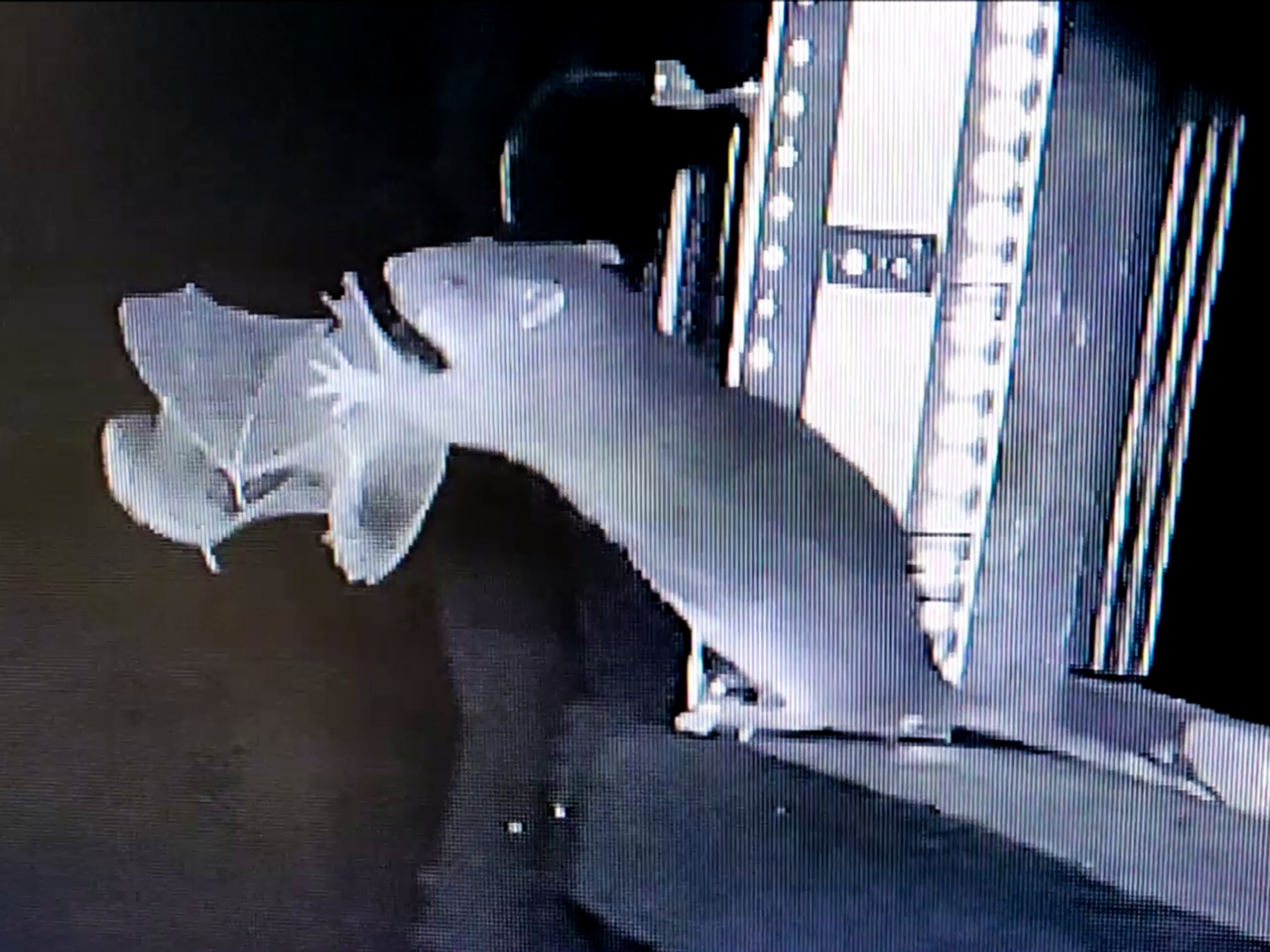
First Bat Removed From U.S. Endangered Species List
Just thirty years ago, only a thousand of the bats remained—but after decades of work, the species is thriving.
In a conservation first made possible by volunteers, scientists, and a splash of tequila, the lesser long-nosed bat is no longer endangered—the first U.S. bat species to officially recover from the imminent threat of extinction.
“The science clearly shows threats to the bat have been eliminated or reduced to the point that the bat has recovered,” said Amy Lueders, the southwest regional director for the U.S. Fish and Wildlife Service, in a statement. “The Service is proud of our strong, decades-long partnerships with very diverse stakeholders on behalf of the lesser long-nosed bat. Without partnerships and collaborations such as these, successful recovery would not be possible.”
The lesser long-nosed bat is one of three bat species in the United States that feeds on nectar. One of the species’s major subpopulations migrates between the United States and Mexico. They mate and wait out the winter in southern and central Mexico, roosting together by the thousands to keep warm. In the spring, they migrate north to northern Mexico and southern Arizona, giving birth in many-female “maternity caves.”
The bats colonize a string of caves and abandoned mines along an agave-rich “nectar trail” from southern Mexico to Arizona. For decades, these roosts—and the bats within them—were under serious threat.
According to the U.S. Fish and Wildlife Service, drug and human traffickers operating on the U.S.-Mexico border regularly made use of the caves, disturbing the bats and sometimes killing them outright. Recreational cavers also spooked the bats, and vandals harassed them.
What’s more, Mexico’s efforts to control vampire bats—which can transmit rabies—had too often spilled over into killing other bat species. And the bats’ favorite foods, the pollen and nectar from agave plants and cacti, were getting harder and harder to find.
These various indignities took their toll. When the species was declared endangered in 1988, the U.S. Fish and Wildlife Service estimated that the bats were down to fewer than a thousand individuals, strewn across only 14 known roosts in the U.S. and Mexico.
Binational Bats
For the last three decades, however, the U.S. and Mexico have cooperated to bring the lesser long-nosed bat back from the brink. Now, the U.S. Fish and Wildlife Service estimates that there are some 200,000 bats living in at least 75 roosts between the two countries.
“This is a great example of binational conservation collaboration—of people working on both sides of the border to not just monitor but also take actions to protect this species,” says National Geographic explorer Winifred Frick, the chief scientist for Bat Conservation International.
Government agencies in the U.S. and Mexico worked to protect agaves and other food sources, such as saguaros. Conservation groups built “bat gates” that prevented humans from entering caves and abandoned mines that the bats had made their home. And volunteers across southern Arizona regularly called in whenever the bats fed on their hummingbird feeders, giving scientists regular updates on the animals’ range.
In 2007, the U.S. Fish and Wildlife Service recommended relabeling the lesser long-nosed bat from endangered to threatened. In 2008, the International Union for the Conservation of Nature made a similar move, upgrading the species from Vulnerable to Near Threatened status. And by 2015, Mexico removed the bat from its endangered species list.
In January 2017, the U.S. first announced its intent to follow suit, a decision finalized on April 17, Bat Appreciation Day. Officials have drafted a plan to monitor the bat species, to be sure that its recovery sticks—an effort buoyed by Mexico’s tequila producers.
Bat-Friendly Tequila
To make tequila from agave, the plant must be harvested before it flowers, to ensure that the plant’s valuable sugars remain in its piña, its iconic, spiky base. Bats can’t feed on these flowerless agave—a cruel irony, since bats are agave’s natural pollinators.
National Geographic explorer Rodrigo Medellín, who has tirelessly worked to conserve the lesser long-nosed bat, has helped solve this quandary. A program he recently started certifies tequila producers as “bat-friendly” if they let some of their agave plants flower, effectively serving them up as bat food. (Learn more about bats and tequila.)
These and other efforts will be needed to secure a future for the lesser long-nosed bat, as well as its relatives. Frick emphasizes that the Mexican long-nosed bat, a closely related species, remains endangered—in large part because it has a less flexible, agave-heavy diet than the lesser long-nosed bat.
“We can fully celebrate [the delisting] as a conservation win,” says Frick. “But we also need to be paying attention to species that aren’t in as good a position.”





